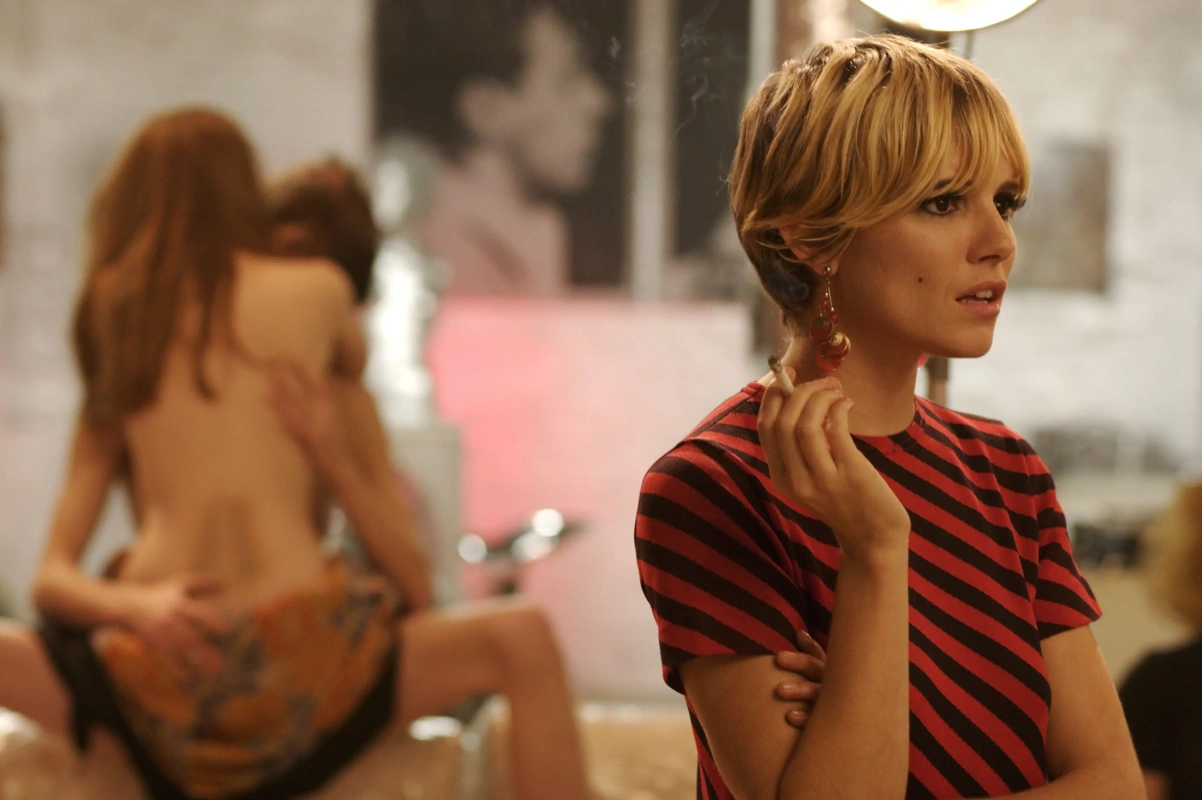The Factory Girl movie was released back in 2006, but still some critics call it the worst art film in history. However, it really has little in common with art.

In the mid-1960s, young Edie Sedgwick moved from Cambridge, where she studied painting, to New York. She is charming, young and rich, all doors are open for her. Soon Edie met Andy Warhol, at that time he already was a very famous artist, who turned her into a "superstar", shot her in his experimental films and launched her modelling career. But after a meteoric rise, a painful fall occurred quite quickly: Sedgwick began to take drugs, spent all her money, former friends turned away from her, and all this inevitably led to a tragic finish.

In general terms, the story of Edie Sedgwick’s life and death can be described just as follows. And in general terms, this is how George Hickenlooper’s film Factory Girl describes it (by the way, Russian version of the movie was titled "I Seduced Andy Warhol", which had nothing to do with either the film or reality). But the devil is, as usual, in the details. The real story of Edie Sedgwick is a prime example of the fact that wealth is not always a guarantee of a happy life. She grew up under tight parenting control, her two brothers died at a young age, she suffered from eating disorders and was harassed by her father since childhood. But in Factory Girl, Edie is portrayed as a "poor little rich girl" whose life has been derailed by the evil influence of perverts led by Andy Warhol.

Edie Sedgwick and Andy Warhol in real life and in the movie
Katie Holmes was originally offered the role of Sedgwick, however, it was rumoured that her then-husband Tom Cruise convinced her to step down because she could negatively affect the actress’s image. As a result, Edie was played by Sienna Miller, although there were some oddities here. The actress passed the casting and was approved for the role, but later the distributor, Harvey Weinstein’s company, decided that Sedgwick should be presented by a star with a higher name. Miller was expelled from the project … and then returned again when she found herself in the centre of press attention due to her breakup with Jude Law.

In general, everything went wrong with the production of the Factory Girl from the very beginning. Shooting was postponed many times, the budget was cut, the final shooting and dubbing had to be done literally at the very last moment before the release. Perhaps the filmmakers should have taken this all as a sign from above… The film failed at the box office, critics left no stone unturned from it, noting, however, the convincing performance of Sienna Miller. Lou Reed, the singer and the songwriter of The Velvet Underground, a group directly associated with Andy Warhol, spoke out very harshly about the film: "I read this script. This is one of the most disgusting, vile things I’ve seen. There is no limit to how low some people are willing to fall in order to make money. They are all a bunch of whores."

Bob Dylan appeared to be another problem for the filmmakers. He threatened to sue them for how they portrayed him in the film, in fact, accusing him of drug addiction and the death of Edie Sedgwick. Of course, in the Factory Girl film Dylan’s name was not called directly, but the character named Billy Quinn (he is, however, also called simply "the musician") performed by Hayden Christensen looks and behaves so much "Dylan-style" that no doubts remain.
Overall, Factory Girl is kind of a parade of clichéd caricatures, completely incapable of capturing the spirit of 1960s New York. For one of the central roles, the creators for some reason invited TV presenter Jimmy Fallon, who played the most boring character in a ridiculous wig. German singer Niko from The Velvet Underground turned into a plastic mannequin with empty eyes. The regulars at Warhol’s Factory are obsessed with sex and drugs (and almost forcibly dragged poor little Edie Sedgwick into their wicked world).
And, finally, Warhol himself, played by the generally gorgeous actor Guy Pearce, is emotionless, cold, preoccupied with his acne more than art, he told gossips during his confession and left Edie alone at her difficult moment out of revenge for choosing a masculine handsome musician. And the quasi-Dylan, in his leather twist and on his motorcycle, is so crudely opposed to the "unconventional" Warhol that one involuntarily begins to sympathize with Sedgwick, forced to choose between two so unpleasant characters.
And, finally, Warhol himself, played by the generally gorgeous actor Guy Pearce, is emotionless, cold, preoccupied with his acne more than art, he told gossips during his confession and left Edie alone at her difficult moment out of revenge for choosing a masculine handsome musician. And the quasi-Dylan, in his leather twist and on his motorcycle, is so crudely opposed to the "unconventional" Warhol that one involuntarily begins to sympathize with Sedgwick, forced to choose between two so unpleasant characters.

Perhaps the only bright spot in this film is actually Edie Sedgwick by Sienna Miller. The actress really plays the character from the script convincingly and dramatically; we see a girl who seems to have not made a single independent decision in her life. But actually, there is no real Edie Sedgwick in this scenario.
Los pintores mencionados en el artículo



















